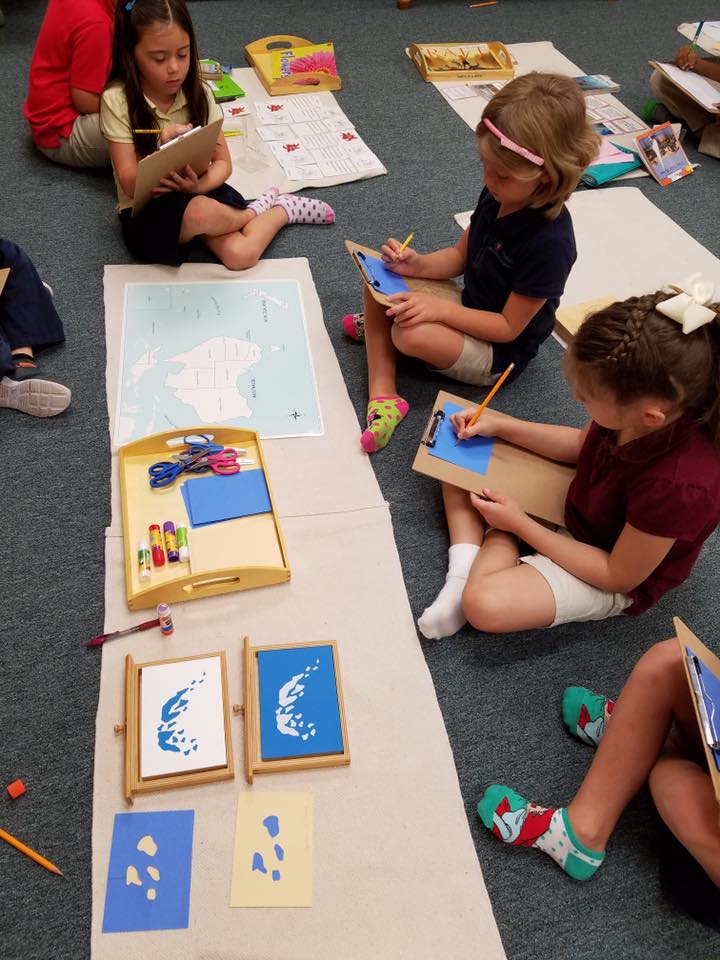The prepared environment of the Montessori classroom includes six basic components: freedom, structure and order, reality and nature, beauty and atmosphere, the Montessori materials, and the development of community life.
The element of freedom in a Montessori classroom is essential. Freedom does not mean a lack of structure. A child is given freedom within certain guidelines. These established guidelines ensure the child’s development of his own independence, will, and inner discipline; thus establishing freedom. Well prepared activities that a child may choose on his own with opportunities for constructive work is one way in which freedom is established. Helping a child to develop a clear understanding of good and evil allows the child freedom within social situations to choose whom he would like to work with and to solve conflicts with his peers. It is important to note that only the destructive acts of a child are to be limited. “Discipline must come through liberty…If discipline is founded upon liberty, the discipline itself must necessarily be active” (Montessori Method, Montessori, p. 86). Freedom allows movement by the child within an indoor environment as well as an outdoor environment if at all possible. A teacher’s role in establishing freedom is to protect the child’s ability to choose. Lessons should be brief so as not to interrupt the work cycle. Teacher directed competitions, rewards, and punishments will interfere with a child’s freedom and so are not a part of a Montessori classroom. As Dr. Montessori stated, “Such prizes and punishments are…instruments of slavery for the spirit…The prize and punishment are incentives toward unnatural or forced effort, and therefore we certainly cannot speak of the natural development of the child in connection with them” (Montessori Method, Montessori, p. 21).


